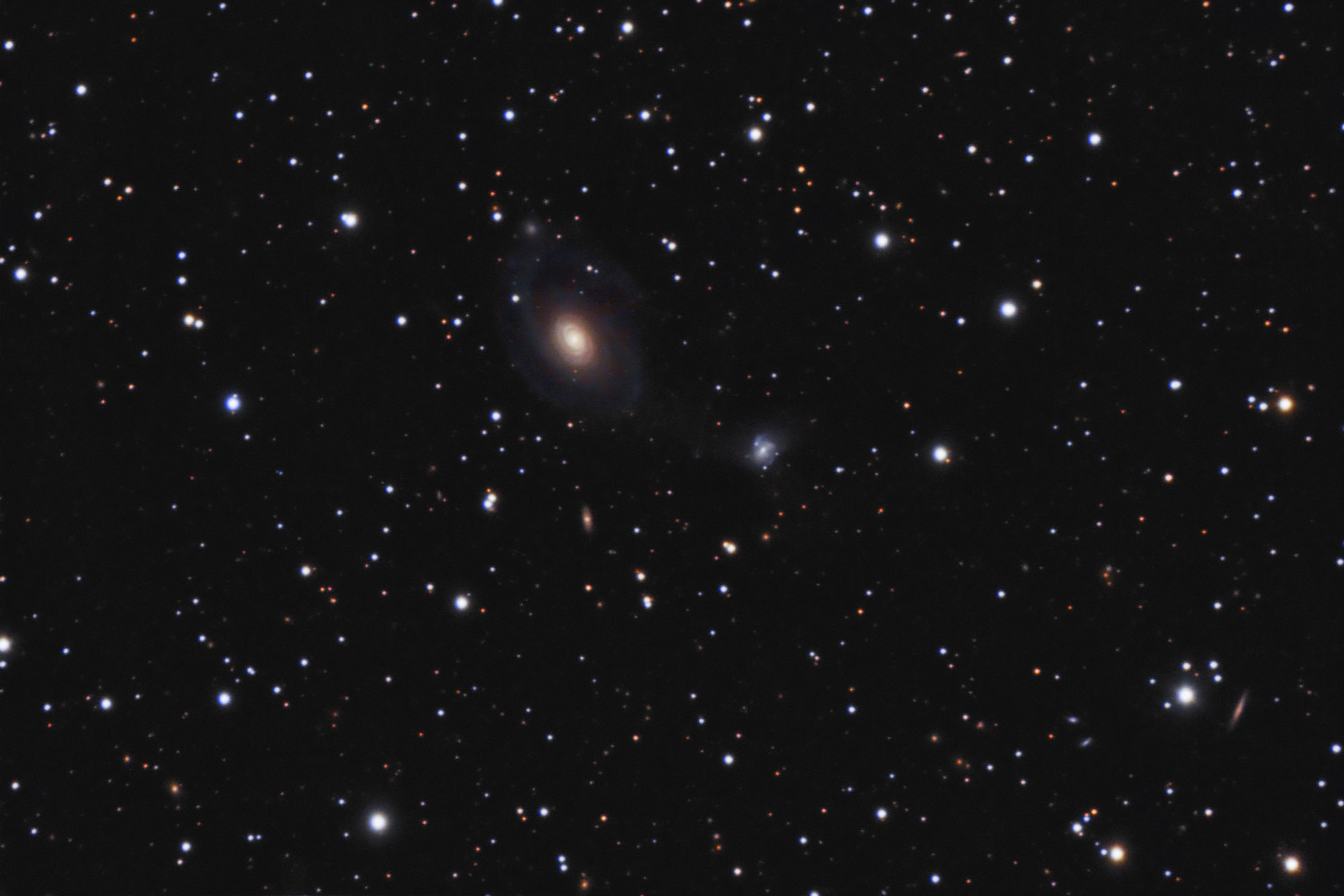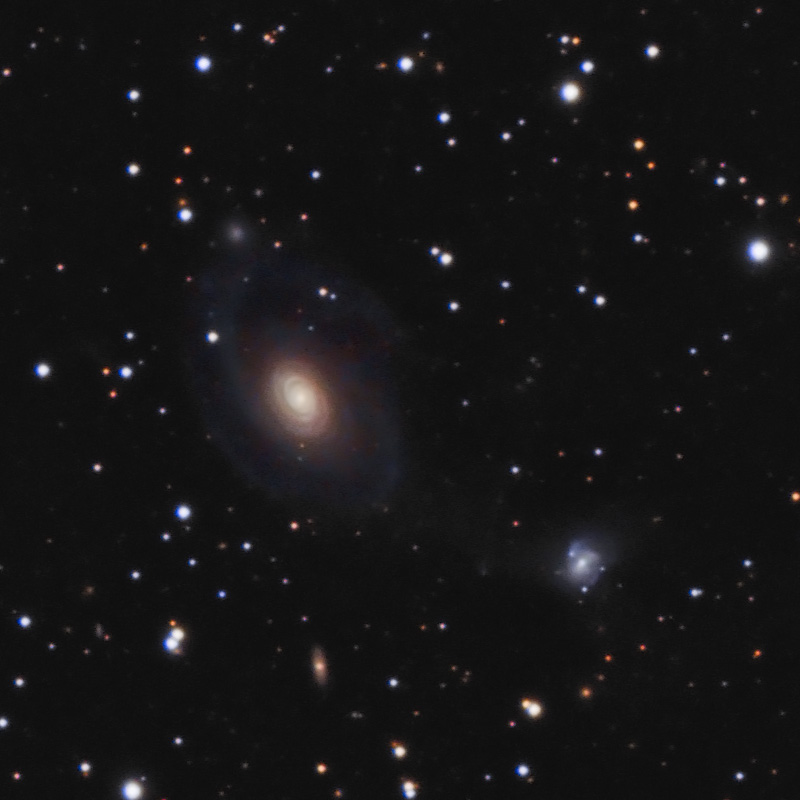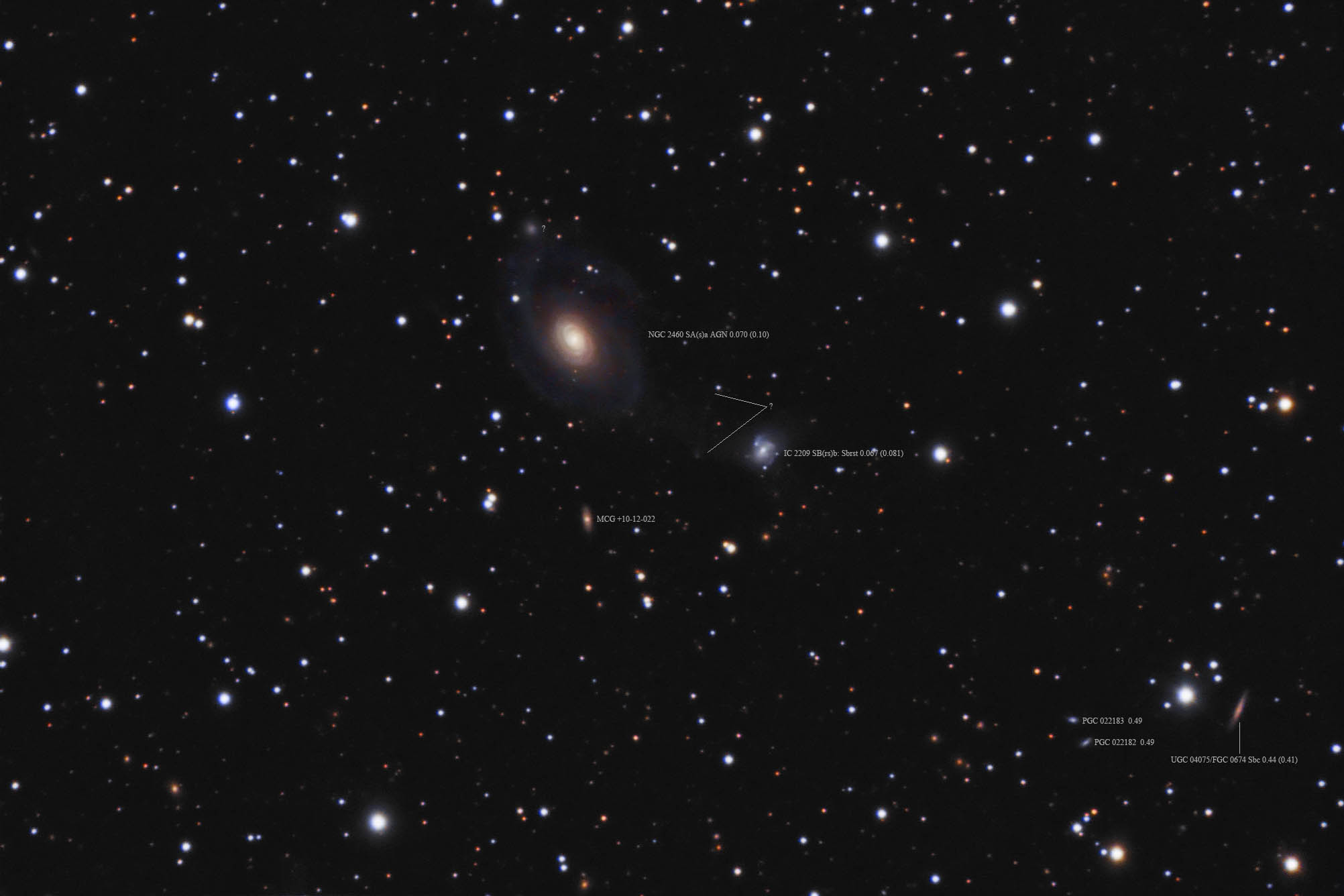| Description | Images |
Object name: NGC2460Designation(s): NGC2460, IC2209, NGC 2460 and IC 2209 are a pair of probably interacting galaxies in the southeast corner of Camelopardalis about 70 million light-years distant by redshift. Tully Fisher measurements, however, can't agree saying IC 2209 is 81 million light-years distant while NGC 2460 is 100 million light-years away or 20 million light-years more distant. If correct they aren't interacting. Still, there's an obvious plume running between the two that appears to come from IC 2209 which has a second obvious plume going to the northwest. NGC 2460 has a bright red central spiral surrounded by a very faint, chaotic blue spiral. Beside the plume between the two, there is an odd linear feature with a couple knots. The annotated image points to the ends of this feature. The knots seem to be redder than the rest of the feature. It seems to be a product of the plume between the galaxies and may be made up of several unrelated features that just happen to line up. This one needs more time than I gave it under the conditions which were rather poor both for seeing and transparency. Typical for this year, unfortunately. Related Designation(s):2MASS J07561415+6018147, 2MASS J07565231+6020578, 2MASX J07561422+6018149, 2MASX J07565226+6020577, AKARI J0756521+602058, CGCG 0752.0+6026, CGCG 0752.6+6030, CGCG 286-078, CGCG 287-008, CGCG 287-010, IC 2209, IC2209, IRAS 07519+6026, IRAS 07525+6028, IRAS F07519+6026, IRAS F07525+6028, KUG 0751+604, LGG 151:[G93] 001, LGG 151:[G93] 002, MCG +10-12-017, MCG +10-12-021, MRK 0013, NGC 2460, NGC2460, NVSS J075651+602055, PGC 022232, PGC 022270, SBS 0751+604, UGC 04093, UGC 04097, UZC J075614.1+601814, UZC J075652.4+602058, | Permanent link: https://images.mantrapskies.com/catalog/NGC/NGC2460-IC2209/NGC2460L4X10RB2X10G1X10.JPG |


